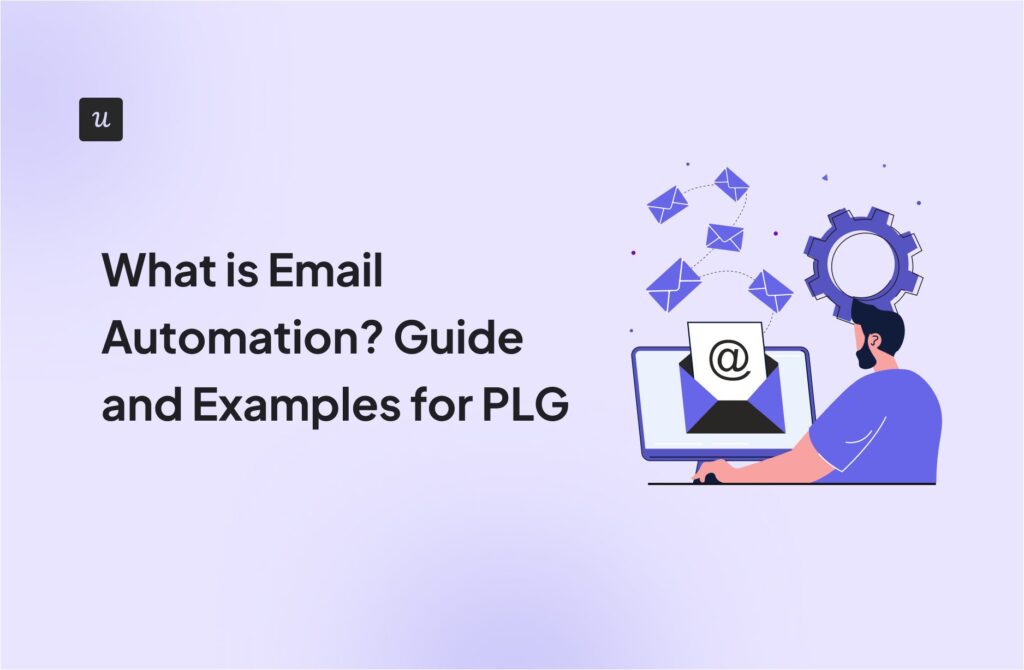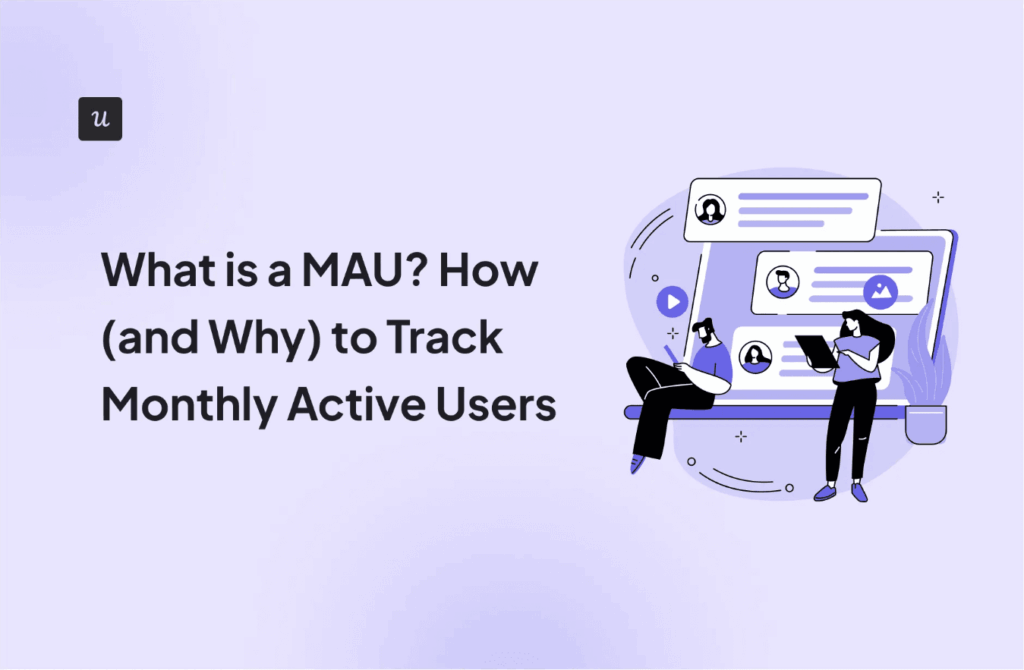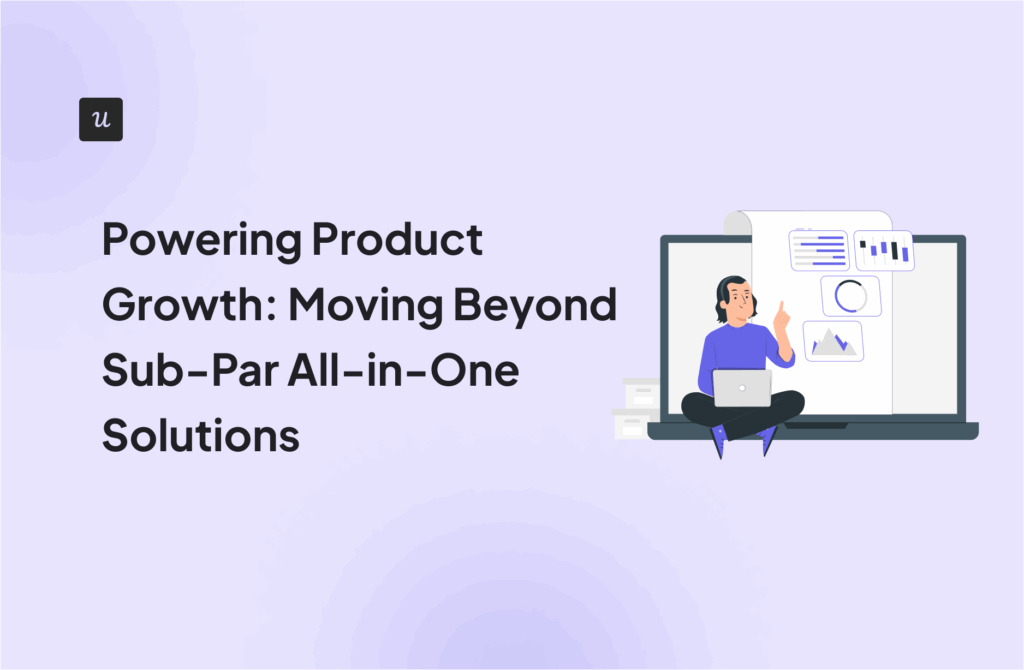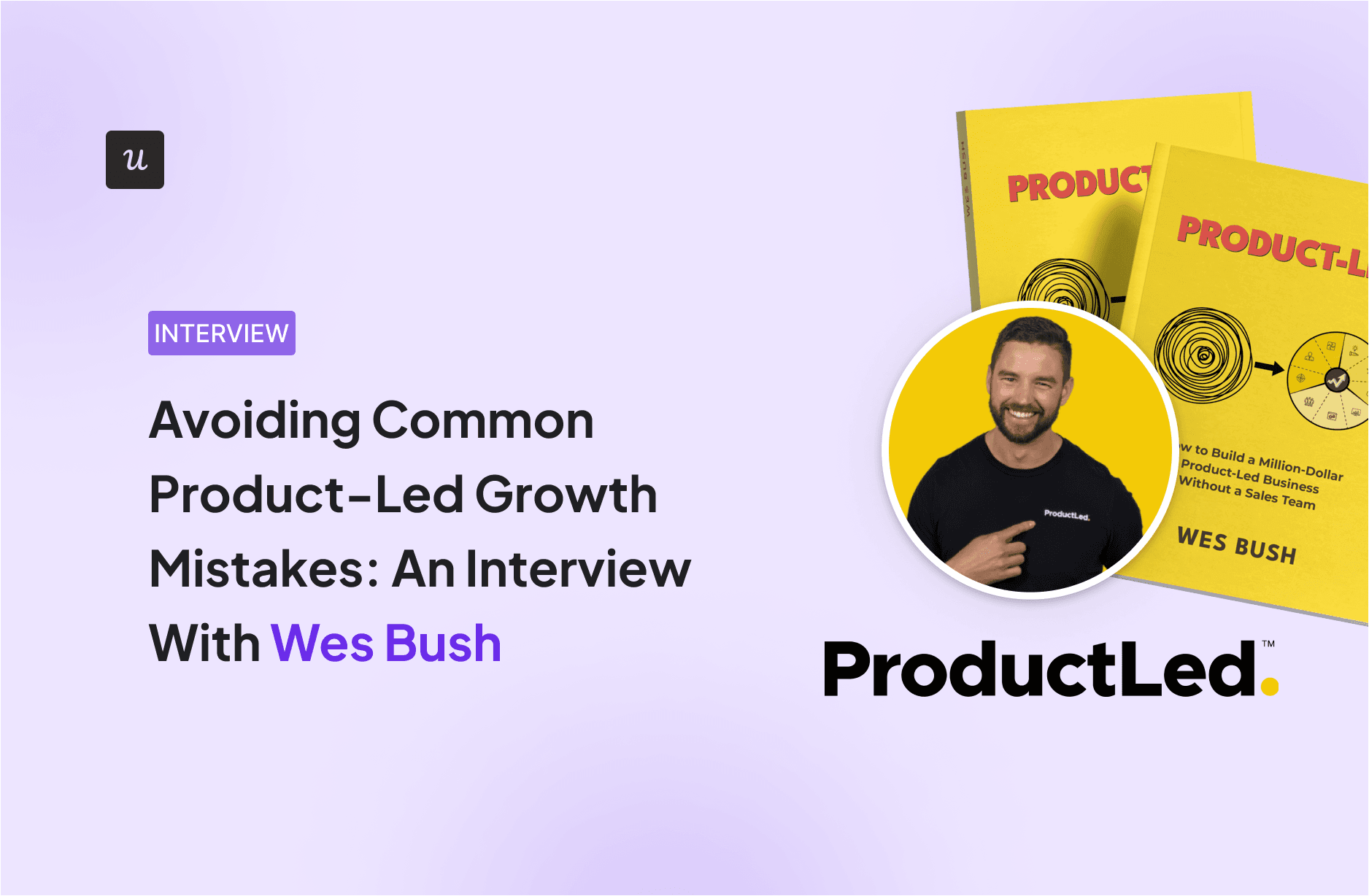
Avoiding Common Product-Led Growth Mistakes: An Interview With Wes Bush
Product-led growth is all the rage in the SaaS industry. But does it work well for all types of companies and are there any mistakes jeopardizing your chances of achieving PLG success?
Wes Bush, Founder and CEO of ProductLed and bestselling author of Product-Led Growth: How To Build a Product That Sells Itself, dives into this topic in an interview with Userpilot.
This is just a quick sneak peek into what he discusses. Continue reading for Wes’s invaluable insights or watch the video below:
Try Userpilot Now
See Why 1,000+ Teams Choose Userpilot

Avoiding PLG mistakes: insights from Wes Bush
Let’s go over the questions we asked Wes one by one.
How would you describe the product-led growth strategy to a newbie?
The main kind of thing I always go back to when it comes to what is product-led growth is that it’s a new way of buying.
When you think about the typical way of selling software, a lot of times that’s about demos where it’s like, hey, let me show you exactly what this does. And that’s really common in a product-led motion. It’s all about, can I try before I buy? Can you show me the value? Whereas the sales-led model is all about telling people.
So that’s really the biggest thing at the core of it. It’s not all of what it is, but at the surface level, that’s what people will say.
Does the product-led model work for every type of company?
Every single company in the world can be product-led. Now different forms of product-led growth exist – so, how this looks like for your company might be completely different. For instance, what we’re doing today with the blogs and the content game is a form of being product-led.
Like, can we provide a ton of value to solve your big problems before you ever become a customer to build trust and to serve people before we sell them? Absolutely. Does it always have to be a free model? No. But that’s a great place to start as your company embodies this across the entire business.
What are some common mistakes companies make when going product-led?
So, the biggest mistake a lot of people get into is they think of product-led growth as just this, where it’s like, hey, we have a free model. We have transparent pricing, overall experience, onboarding, and all that stuff, and then we have our offer. And so that’s actually what gets people in trouble is we think it’s this mount PLG.

But you forget everything that supports PLG, such as everything below the surface.
And when you do that, what ends up happening is you don’t have the organization that actually supports you, and you don’t have the strategy that connects to where PLG fits into this. You don’t have the right teams. You don’t have the right capabilities. You don’t have the right data.

You don’t know what’s going on in the product and if users are getting value. And you sure as hell don’t have a lot of great experiments that are going to improve that PLG experience and everything else. So that in itself is the biggest thing that most people get wrong.
Can you share any examples of companies that have made these mistakes?
I’ll share my own story for this one.
So, when I was at Vidyard (video marketing tool), we decided to launch a free trial since everybody else was doing it. So we just looked and said, oh okay, our competitors are doing a 14-day free trial – let’s do that too. And so we just simply slapped on a free trial.
We got a lot more sign-ups, but then we were wondering why none of those people were converting. The only ones that did were the ones that sales had talked to. Surely, PLG doesn’t work in this instance.
And so, it really comes back to what I said before because we approached it very surface-level. We just slapped on PLG to our business, but we didn’t have that PLO (product-led organization) experience.
Now compare that to our second time when we realized that nobody was uploading videos in our free trial. So we asked them why and it’s because they’re like, oh, we didn’t really have a good video we could share.
And so we decided, let’s just make it free and make it easy for anybody to do that. And so we created a free Chrome extension and because we did that, it made it so easy for people to have that experience.
Within the 1st 12 months, we had 100,000 people going through and using the product, and then there are millions of people today.
And that is still to this day, you start with Vidyard, and you create a video. It’s easy. And that is exactly why it worked because it solved a meaningful problem and people were able to get access to that value in the product quickly.
How can companies avoid falling into these PLG traps?
The main thing that companies can do to avoid falling into this trap is to start with a product-led organization.
Your PLG motion will only become as strong as your product-led organization. And so those product-led organizations are the company-focused backbone that makes PLG work. So that is how you avoid it.
Editor’s note: Customer behavior data is a crucial element for product-led organizations that helps them make informed decisions. Userpilot’s no-code analytics tool provides custom events, various reports (funnels, paths, trends, retention), and visual dashboards to extract valuable insights for improving retention and revenue.
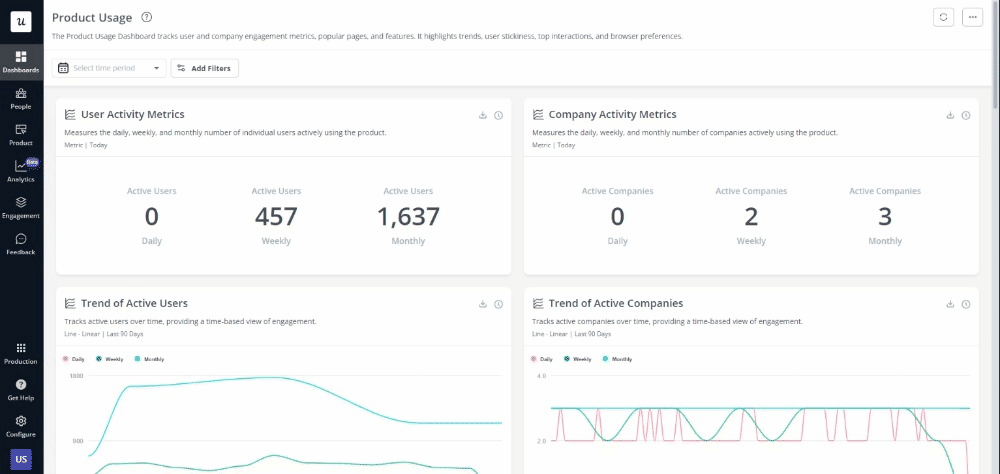
What are some signs that a company is not effectively implementing the product-led strategy?
Oh, this is a good one. The main one is your free-to-paid conversion rate sucks. Like you’re not seeing a lot of people convert from free to paid. You will also see a lot of churn from the first 30, 60, 90 days if you don’t have the right model.
Those are some of the main ones you would look at, and then just people not going back and logging in.
Is it possible for sales-led / marketing-led companies to transition into product-led?
Yes. Absolutely. Here’s exactly how you got to do it:

So you have to start with your strategy, identify the ideal user, and then you have to build your intentional model.
Then, phase 2 is all about building a product that sells stuff. So you have to get the right offer, make it frictionless for people to get the value, and choose powerful pricing so people can sign up on their own.
And, then you can move into the 3rd phase, which is all about getting the right data, launching experiments to improve, and then making sure you have the right team.
So that order actually solves 90% of the problems when it comes to how you make that transition. You have to follow this order and have to get everybody bought into the right approach.
What are the cultural shifts that companies need to make to successfully adopt a product-led approach?
There are a lot. I’ll sum up some of the core values that you would need.
The first is simplicity. Simplicity is really, really important for a product-led company just because by nature, what you’re doing is making something a lot easier. So, you have to embody that.
Another thing is transparency. You’re putting your product first, and it might not be that good of an experience initially, but you have to believe in that and give people that transparent experience to experience the value of the product, the pricing, and all those things. So you need to embody both of those really well.
And the third one is all about empowerment. So, make sure you’re really all about empowering your users to see value and giving them everything they need to succeed.
The last one is empathy. You have to make sure you build a culture of empathy, whether that’s having everybody on your team do a day of support every month or something like that to just keep them grounded, so they understand what are those challenges that people have.
How can companies measure the success of their product-led strategy?
Simple. It comes down to 3 basic things. So the very first one is effortless annual recurring revenue.
And so this is all about, can your product actually sell itself? The metric we look at here is self-serve revenue. So, where do you stack up on a scale today and where do you wanna be?
The second main outcome is the lean scale. How can you build a big business with a tiny team? So what does that look like with your revenue per employee?
The third is durable growth. So can you actually unlock more profits every single year in your business? You need a really rock-solid strategy to maintain this, as your competition will catch up to you.
You always got to be readapting, and reevolving your company. But we just look at profits here. What does that look like for your specific business?
Are there any resources or tools you would recommend for companies interested in PLG?
Totally go to our website, productled.com. That is the biggest one.
If any of the systems sound interesting for people to dig in and dive in, we give away the first three chapters of that book, which literally just goes all through that. And there’s a little assessment where you can score yourself on those 9 components.
Editor’s note: If you’re looking for a tool to streamline your PLG efforts, there is no better option than Userpilot. With Userpilot, you benefit from in-app engagement, self-service support, analytics, and feedback features that maximize product value and help showcase it to your customers. Book a demo to learn more.

What advice would you give to companies looking to adopt a product-led growth approach?
Have conviction. So the clients we don’t work that well with are the ones where they’re tiptoeing their way around PLG. It’s like, come on. Like if you’re gonna be a marathon runner, be a marathon runner. Don’t try and be a sprinter.
There’s conviction and then commitment. Have commitment because, for the 1st year, this might not make sense. Sometimes even the 2nd year. So you really gotta lean into this.
Is there anything regarding this topic that I didn’t ask that you’d like to talk about?
I’ll sum it up with:
You need product-led growth but don’t kid yourself. PLG is only half of the story. What you really need is that product-led organization to support everything.
How to become product-led with Userpilot?
If you’ve decided to jump on the product-led bandwagon, Userpilot is a user-friendly tool that has all the features to help you achieve PLG success.
Here’s how Userpilot can help:
- Create personalized in-app experiences using in-app messages, walkthroughs, and checklists – customizable with a WYSIWYG editor and AI-writing assistant.

- Increase trial-to-paid conversion rate by tracking friction and drop-off points in the funnel and take corrective action to improve conversions.

- Collect customer feedback via in-app surveys and feedback widgets to keep track of customer sentiment, feature requests, and user pain points.

- Conduct in-app experiments with A/B and multivariate testing to monitor how changes in the product experience impact user behavior.

- Provide self-service support with an in-app resource center that can be localized for global markets.

Start a 14-day free trial (no credit card needed) or book a demo to learn more about how Userpilot can help you execute your PLG strategy.
Conclusion
When implemented effectively, product-led growth can yield remarkable results. Wes Bush’s insights are invaluable in this regard. Explore ProductLed for more on product-led growth and use Userpilot to execute it seamlessly. Book a Userpilot demo to learn more.



